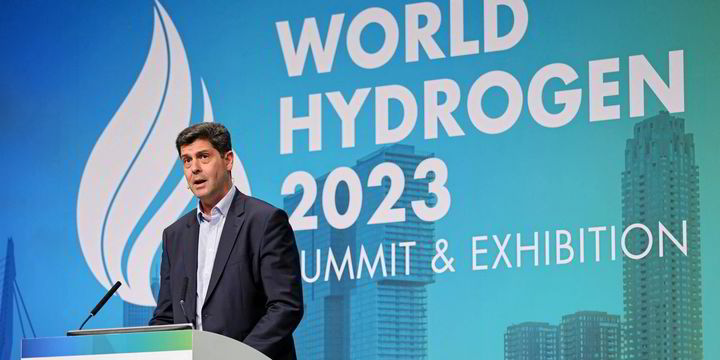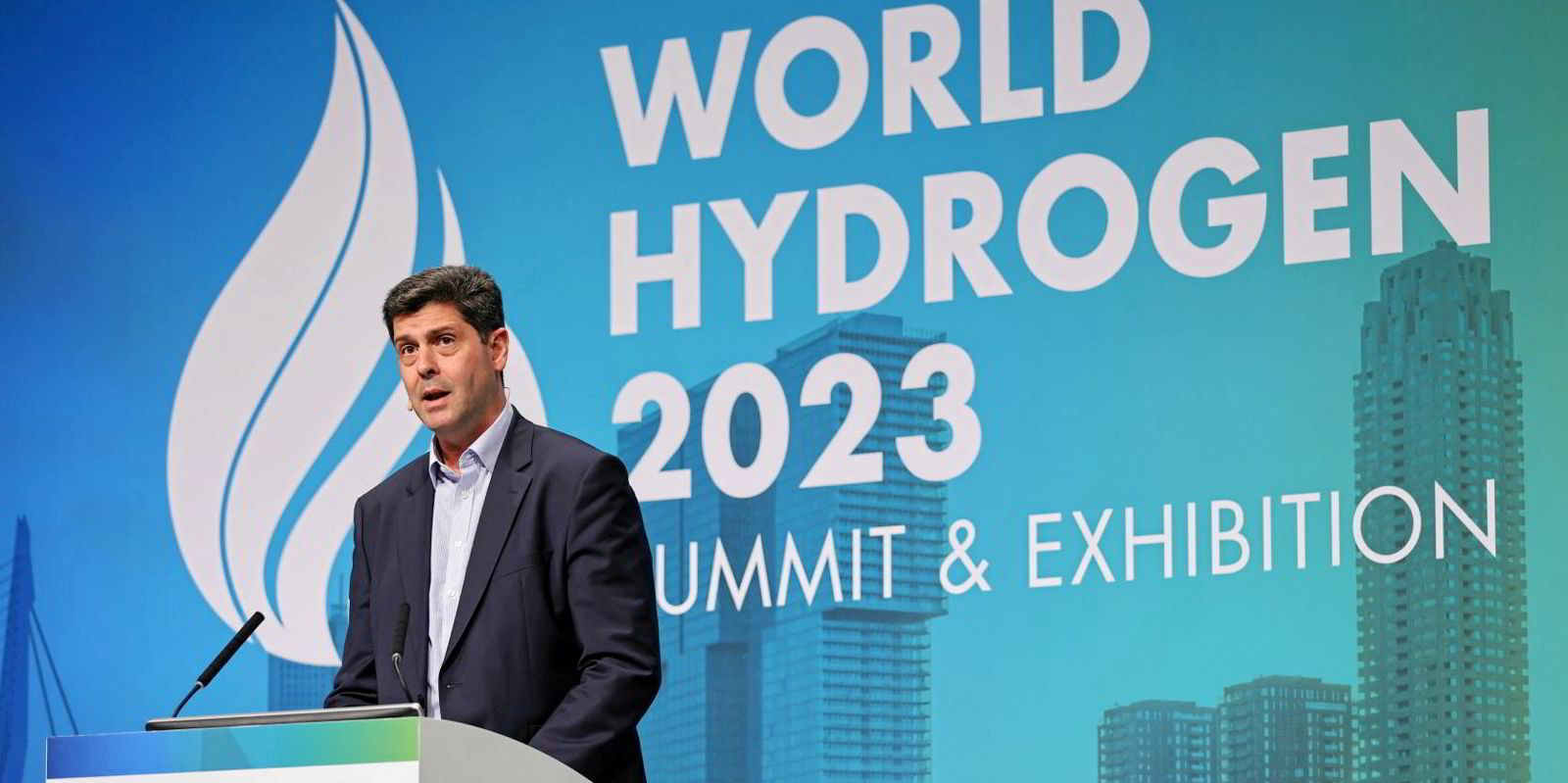It does not make economic sense to ship clean hydrogen from country to country, and the industry should initially focus on replacing existing uses of grey hydrogen, according to a leading BP executive.
BP’s senior vice president for hydrogen and carbon capture and storage (CCS) Felipe Arbelaez told the World Hydrogen Summit in Rotterdam on Wednesday that clean hydrogen “has a vital role to play in cutting emissions, especially in sectors like cement, steelmaking and chemicals… and for heavy transport — trucks, ships and aircraft”.
He then discussed three “lessons” he had learned in his role at BP.
“The first thing I’ve learned is that our collective efforts should be initially focused on going after industrial use of hydrogen,” Arbelaez said.
“Why? Because just two or three willing companies can launch a project, make it investable and then execute it.
“I’m not saying it’s simple, by the way. But it’s much easier than, say, using hydrogen for heating homes.”
Article continues below the advert
He explained that using hydrogen instead of natural gas for heating “may require the approval of potentially hundreds of thousands of households” and the retrofitting of existing distribution networks.
With hydrogen right now, the transportation costs can actually outweigh the cost to produce the fuel
“That’s far more challenging in the short term, particularly for an industry trying to find its feet.”
Arbelaez’s second “lesson” was that hydrogen is more complex than any other energy commodity.
“For instance: how do you price it? How do you produce, store and supply it safely?”
And the third lesson was “how important it is to focus on how you transport it”.
“With hydrogen right now, the transportation costs can actually outweigh the cost to produce the fuel,” he told the conference.
“That’s because hydrogen is a less dense molecule than natural gas. It would take around three times as many ships to transport the same amount of energy as LNG [liquefied natural gas].
“Right now, that means there is no economic sense in shipping hydrogen.”
Arbalaez explained that this leads him to believe that the clean hydrogen roll-out will start in industrial hubs — with “a bunch of customers in a geographical location that is self-contained… with low transportation costs”.
The companies that crack the code on shipping hydrogen efficiently and cost-effectively will be very well positioned for the international market
He continued: “When these projects become successful, there will be a clamour to develop pipelines to other locations.
“Piping hydrogen is much cheaper than shipping it. So, we could see a situation where it is piped interstate — from the US Gulf Coast to the Midwest, to Indiana, Illinois and Ohio, for example.”
He added that “in time, when the regional supplies are taking off, when the technology advances and hydrogen can be shipped cost effectively, we will see a globally traded hydrogen market”, giving examples of H2 being shipped between Australia and Japan and from North Africa to Europe.
But there was still the small matter of figuring out how to get to that point.
“The companies that crack the code on shipping hydrogen efficiently and cost-effectively will be very well positioned for the international market,” Arbalaez said.
BP’s own hydrogen plans
He went on to explain that BP initially plans to supply its own refineries with green or blue hydrogen — replacing the grey hydrogen made from unabated fossil gas that is used to remove sulphur from crude oil — before “ramping up production to turn these into regional hubs… particularly in the hard-to-abate sectors where hydrogen can have most impact”.
“And as markets evolve, we plan to invest in building global export hubs for hydrogen and for hydrogen derivatives such as ammonia — like we are doing as lead operator of the Australian Renewable Energy Hub,” he said.
That project in northern Western Australia aims to eventually install 26 gigawatts of onshore wind and solar power, producing 1.6 million tonnes per annum of green hydrogen, or 9 million tpa of green ammonia.
But Arbalaez told the Rotterdam audience that BP only aims to produce between 500,000 and 700,000 tpa of green hydrogen by 2030.
“So, to summarise, I’ve learned a great deal about hydrogen — its complexities, what to focus on first, the long-term goal for an international market, and how to get there — from local, to regional, to global,” he said.
* A version of this article originally appeared in Upstream’s sister publication, Hydrogen Insight.

